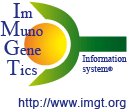ADCC and CDC
Antibody-dependent cellular cytotoxicity (ADCC)
In antibody-dependent cellular cytotoxicity (ADCC), Fc gamma receptors (FcγR or FCGR) on the surface
of immune effector cells bind the Fc region of an antibody, itself specifically bound to a target cell.
The cells that can mediate ADCC are nonspecific cytotoxic cells such as
natural killer cells, macrophages, monocytes and eosinophils. Upon FCGR binding to the antibody, the FCGR
ITAM is phosphorylated, which triggers the activation of the effector cell and the secretion of various
substances (lytic enzymes, perforin, granzymes,
TNF) that mediate the destruction of the target cell.
The level of ADCC effector function is high for human IgG1 and IgG3, low for IgG2 and IgG4, and for these
last two subclasses, the level of binding depends on the FCGR isotype and on the cell type.
Complement-dependent cytotoxicity (CDC)
In complement-dependent cytotoxicity (CDC), the C1q binds the antibody and this binding triggers the complement cascade
which leads to the formation of the membrane attack complex (MAC) (C5b to C9) at the surface of the target cell,
as a result of the classical pathway complement activation.
The level of CDC effector function is high for human IgG1 and IgG3, low for IgG2, and null for IgG4.

Antibody-dependent cellular cytotoxicity (ADCC) and Complement-dependent cytotoxicity (CDC)
Human IgG1 and IgG3 which display high ADCC and CDC, are the most suitable for therapeutic use against pathogens and cancer cells. Practically IgG1 which is less polymorphic than IgG3 and has a shorter hinge is the most frequently used in antibody engineering.



